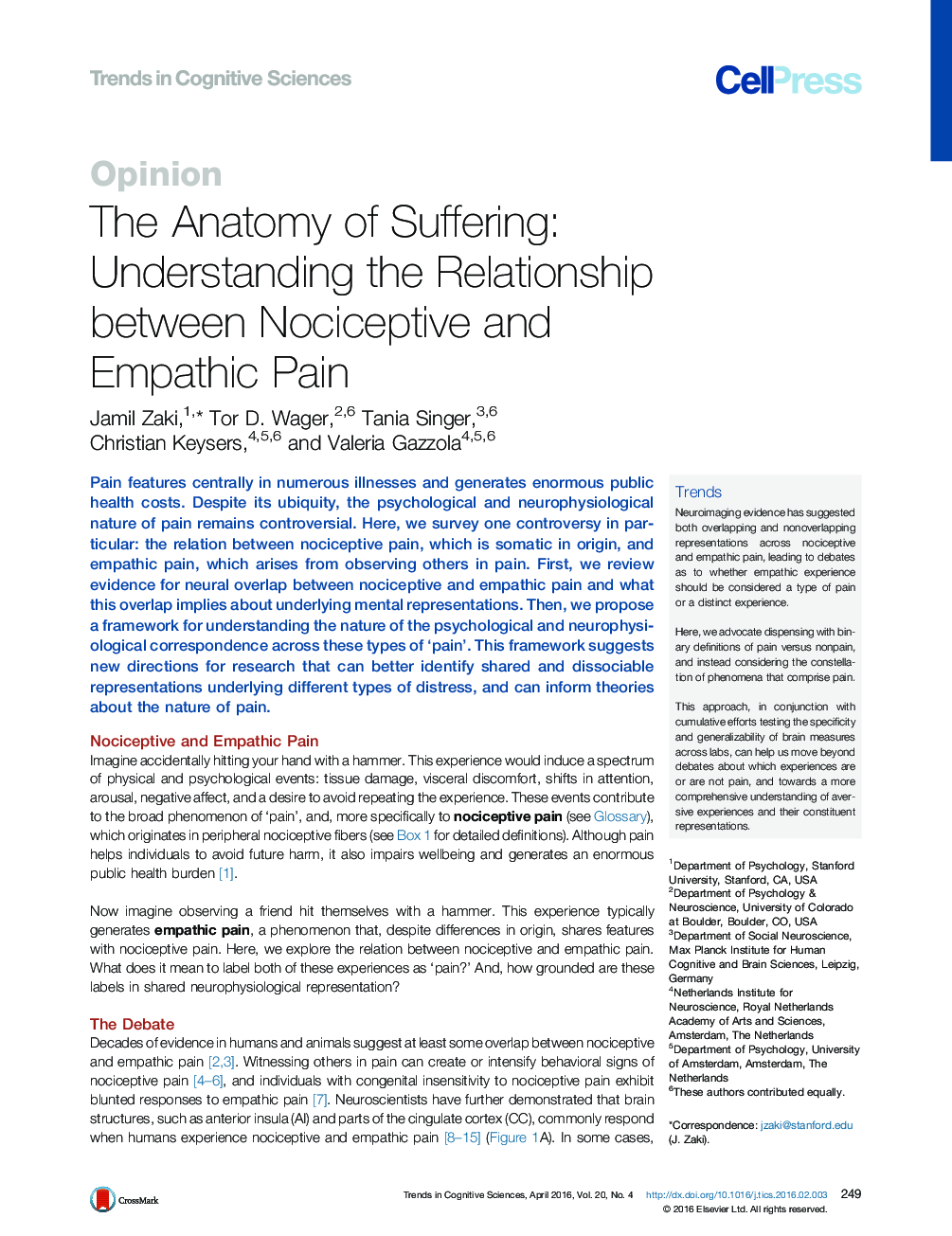| Article ID | Journal | Published Year | Pages | File Type |
|---|---|---|---|---|
| 141376 | Trends in Cognitive Sciences | 2016 | 11 Pages |
Pain features centrally in numerous illnesses and generates enormous public health costs. Despite its ubiquity, the psychological and neurophysiological nature of pain remains controversial. Here, we survey one controversy in particular: the relation between nociceptive pain, which is somatic in origin, and empathic pain, which arises from observing others in pain. First, we review evidence for neural overlap between nociceptive and empathic pain and what this overlap implies about underlying mental representations. Then, we propose a framework for understanding the nature of the psychological and neurophysiological correspondence across these types of ‘pain’. This framework suggests new directions for research that can better identify shared and dissociable representations underlying different types of distress, and can inform theories about the nature of pain.
TrendsNeuroimaging evidence has suggested both overlapping and nonoverlapping representations across nociceptive and empathic pain, leading to debates as to whether empathic experience should be considered a type of pain or a distinct experience.Here, we advocate dispensing with binary definitions of pain versus nonpain, and instead considering the constellation of phenomena that comprise pain.This approach, in conjunction with cumulative efforts testing the specificity and generalizability of brain measures across labs, can help us move beyond debates about which experiences are or are not pain, and towards a more comprehensive understanding of aversive experiences and their constituent representations.
